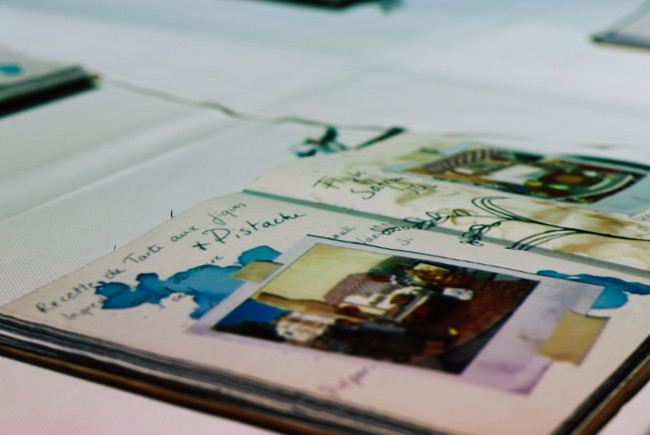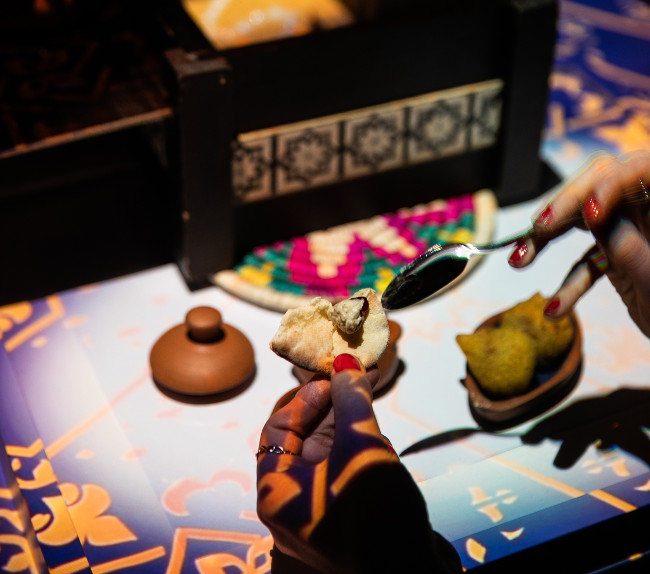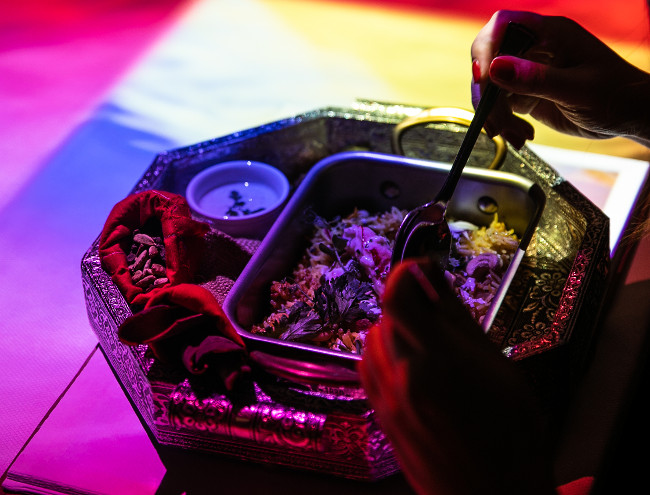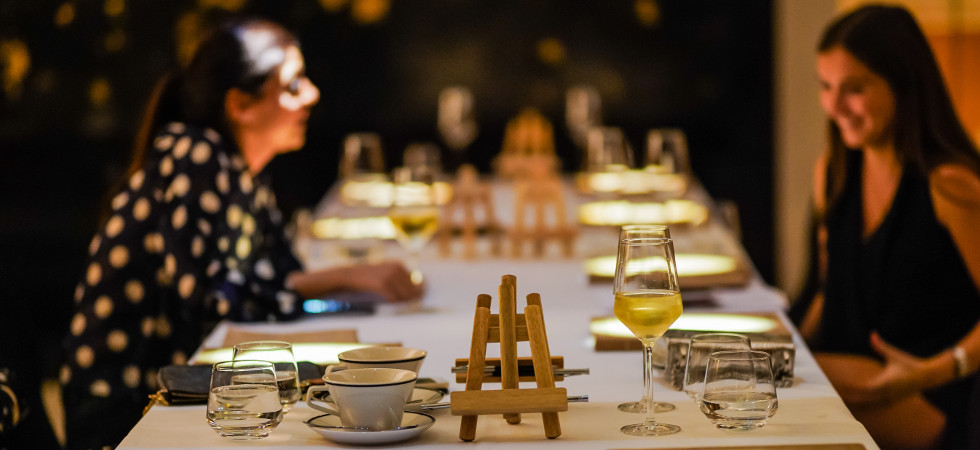Words by Katrina Kufer
Dubai has no shortage of novelty eats that are unique, fun, and if lucky, form a trifecta with tasty. It is a city rife with a rotating door of culinary experiences, and Le Petit Chef is one of the city’s latest gourmet treats – this time taking diners along the footsteps of Marco Polo by ways of fine dining-meets-3D mapping and optical illusion in an experience exclusively offered at the Four Seasons Dubai International Financial Centre.
Created by Belgium-based Skullmapping, an artist collective founded in 2010 by Filip Sterckz, an award-winning filmmaker and artist, and Antoon Verbeeck, art gallery owner, the concept is simple and sweet.
A series of projectors produce a tiny French chef – comical and lightly slapstick in character – who wanders about turning the pages of your open book (in the place of a placemat) and scarfing down chili peppers as the tabletop is transformed from sandy dunes and cushioned markets to pots of spices, sweeping Himalayan landscapes and ocean shores.

A verbal description of the digital projection does not do it justice – rather, it belies a playful form of entertainment that does not veer cliché or juvenile. The clever incorporation of technology renders the imagery realistically three-dimensional and gives it a markedly adult-edge, and the miniature chef’s tumble through geographies surprisingly proves difficult to pull your eyes away from.
Kept to a relatively intimate table of 12 at the most, the exclusive, thrice-weekly dining experience is a guided sensory journey through the Middle East, South and Central Asia before looping back around to Europe. It is novel – but it is also a genuinely fine dining, where the ‘show’ supports the gourmet cuisine rather than detracts from it.
The amuse-bouche features a small trunk filled with foie gras and caviar to tantalise the palette and set the tone for the quality yet to come, while the Middle Eastern portion is presented in a chest which includes creamy mouhammara (walnut, red pepper and pomegranate molasses dip) and hummus, and meat kebbe (similar to an encrusted meatball) paired alongside a fantastically flavourful lentil kebbe that proved popular across the table.

While provided in hors-d’oeuvre sized portions, it soon becomes apparent that this was wise planning on the part of the chef as the meal proved just right in portioning so that the dinner remained sexy and fun rather than over-indulgent.
The next stop was India, where the tabletop became a patchwork of richly hued spices. Taking inspiration from the amuse bouche, the South Asian dish skillfully toed the line between authentic and luxe – served in metal flatware, the biryani was spiced with just enough heat, and the expertly poached lobster it was served with only reaffirmed love for the crustacean.
The journey into the Himalayas – which for the chef meant a ride atop a bird soaring across the table – marked one of the more gimmicky turns of the meal, when hot water was poured on a metal plate to create a wall of steam surrounding the unctuous, rich lemon-yoghurt sorbet. It was a predictable table trick, but evocative and dramatic, just enough of a wake-up for the middle of the meal before it took diners to China.
While the delicate flavour manipulations and eye play did not carry as gracefully into the somewhat heavy-handed sauce of the beef and broccoli, the quality of the produce could not be denied. The meat was cooked to tender perfection and fell apart with nary a prod of the knife, and the broccoli was crisp and verdant.

Upon filling out the passport-cum-journals that had been provided and swapped throughout the course of the meal for diners to share their thoughts, it became clear that the beef may have proven a polarising dish that did not sing with as much verve as the rest of the dinner thus far – but Le Petit Chef was not one to underestimate, or undervalue, the importance of a fabulous final experience on the palette: the dessert.
In a deft, clever move that tied the diverse flavour profiles together, the generous citrus crème brûlée merged the nuances of each stop together in a brilliantly cohesive, delicious finale. The citrus-y caramelised sugar topping was just acidic enough to lift the creamy custard into freshness, and it was further bedecked in textural elements including cardamom and pistachio to produce a dessert that was decadent and exotic while still reading familiar and subtle. In short, it gave diners – and travellers – exactly what they could possibly want at the end of a long journey: comfort.
Le Petit Chef is a playful, amusing and engaging dinner experience – drawing chuckles out from even the most corporate of guests –with an intelligent and thoughtful concept that reignites a sense of vivacity, curiosity and exploration.
For more information, visitdinnertimestory.com
Photography courtesy of Hossam Adel






















